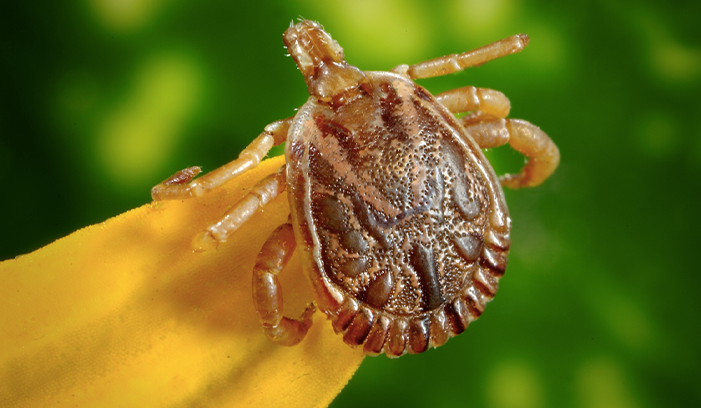
25 Apr You Know What Ticks Us Off?
That’s right, it’s ticks. Ticks belong in the family Arachnida (like spiders and scorpions), and can be found all over the world. They are ectoparasites, meaning that they live outside of their host. Because ticks are parasites, they are known to carry many different types of disease. Amongst the most common are Lyme disease, Rocky Mountain spotted fever, tularemia, and relapsing fever. Although ticks are adaptable to most climates, they prefer warmer weather, which is unfortunate for us. Here is some more information to help keep you and your loved ones tick-free this summer.
The Tick Classification and Life Cycle
Ticks come in two basic forms, Ixodidae (hard ticks) and Argasidae (soft ticks). Hard ticks have a scutum or a hard shield that covers the outer body wall of the tick. Soft ticks lack this shield. Although both categories of ticks go through the same four life cycle stages (egg, larva, nymph, and adult), the soft tick can go through multiple nymphal stages whereas the hard tick only goes through it once.
Hard ticks in the United States are generally “three-host ticks.” This means that after each blood meal it has, the tick leaves to find a new host to feed on. Once this process is done three times, then the tick can complete its life cycle.
Soft tick’s life cycles can range from months to years. These types of ticks are usually “multi-host ticks,” and it is common for a single female soft tick to lay hundreds to over a thousand eggs during her lifetime.
Diseases Spread by Ticks
Diseases spread by ticks happen through the transmission of pathogens, which are organisms like bacteria and viruses. When ticks feed, they attach to their hosts very firmly and feed for days. To further read and see this process, you can go here to check it out. During this process, the pathogens that a tick may have are passed onto its host.
Ticks can carry a variety of pathogens. This is especially troublesome because it can be difficult to diagnose specific symptoms that may be associated to a certain disease. Ticks harvest these pathogens in two specific ways: by mechanical transmission and by biological transmission.
Pathogens are passed on to ticks by touch in mechanical transmission. Biological transmission occurs when a pathogen develops in the tick by feeding on blood. The reason why this knowledge is so important is because it can determine how tick-borne diseases can be reduced without heavily relying on the widespread use of insecticides.
Common Areas Where Ticks are Found
A variety of animals can host ticks. Birds, reptiles, rodents, horses, and other mammals can be perfect hosts for ticks. When ticks are not attached to their host, they can be found in temperate and wooded areas. Areas containing high grass and brush, woodpiles, and even beaches can be acceptable areas for ticks. Fortunately, there are many ways you can protect yourself from these pests. These include using a DEET repellent, wearing long sleeves and tucking pant legs into your boots when going on hikes or camping, and treating your clothes and gear with permethrin.
For more information on ticks, you can visit the Centers for Disease Control and Prevention. If you suspect that you may have a tick problem, or want to prevent the chances of bringing them into your home, contact us at 817-834-3121! We specialize in the prevention and removal of ticks (amongst other pests), and can customize a service specifically for your individual needs!
Sources:
Mallis, Arnold. (1997). Handbook of Pest Control (8th ed.)




